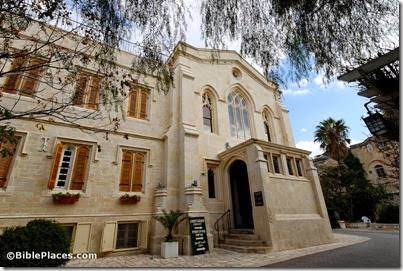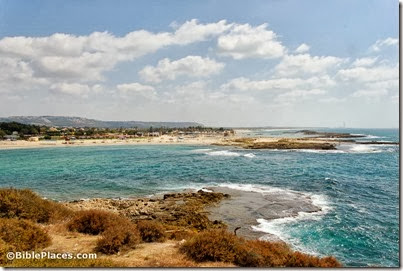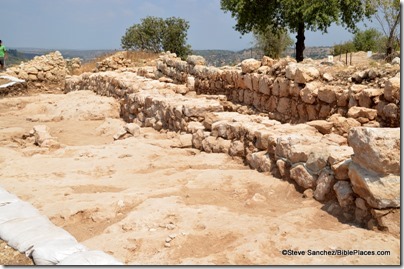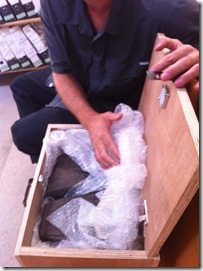Aviva and Shmuel Bar-Am tell the fascinating story of Moses Shapira and his alleged discovery of an ancient scroll of Deuteronomy. The Times of Israel article includes quite a bit of interesting information about Christ Church, even though it is not really relevant to the story. The question that has never been resolved is whether Shapira held the first discovered Dead Sea Scroll.
Christ Church was the first Protestant church in the entire Middle East, and the only evangelical church in the region. Outwardly resembling a grand European synagogue more than a Christian house of worship, it was erected in 1849 by the London Society for the Promotion of Jews to Christianity for the express purpose of drawing Jews into the Christian fold.
Before that time, simple proselytizing — and the promise of financial gain — had resulted in very few Jewish conversions; the Protestant Bishopric in Jerusalem hoped that an attractive, accessible church might facilitate the cause.
Church fathers wanted Jews to feel comfortable in the sanctuary, which is why the interior is replete with Jewish symbols.
Jewish students at the workshop manufactured the stunning olive wood communion table, decorated with both a Star of David and the Christian Alpha and Omega.
There were no crosses in the church; the cross on the table appeared in 1948, when Jordanians captured the Old City and Anglicans feared their sanctuary would be mistaken for a synagogue.
Moses Wilhelm Shapira, born Jewish in 1830, was 25 when he left his Russian homeland for the land of Israel.
Somewhere along the way, he converted to Christianity.
The full story is here. Shapira’s story is told in greater length in Neil Asher Silberman’s Digging for God and Country: Exploration, Archaeology, and the Secret Struggle for the Holy Land.
UPDATE: See the Jim Davila’s comments here.
Photo from Pictorial Library of Bible Lands



